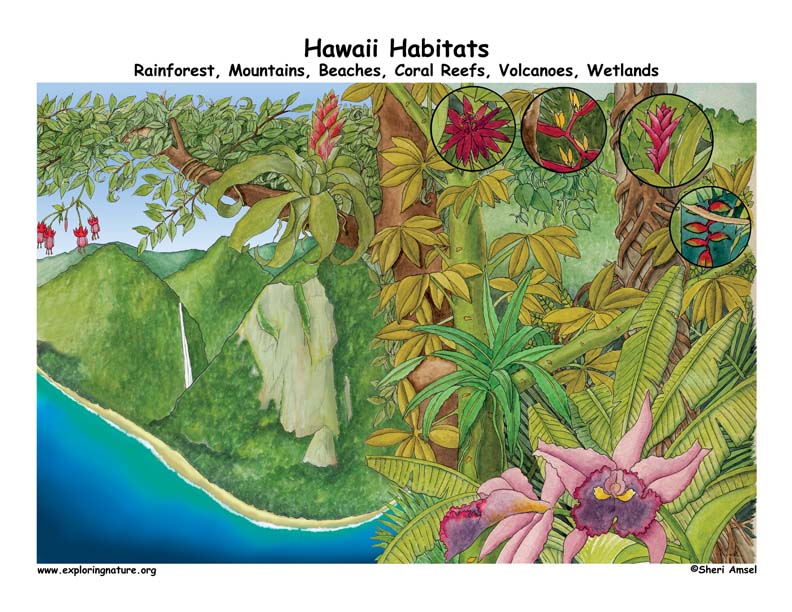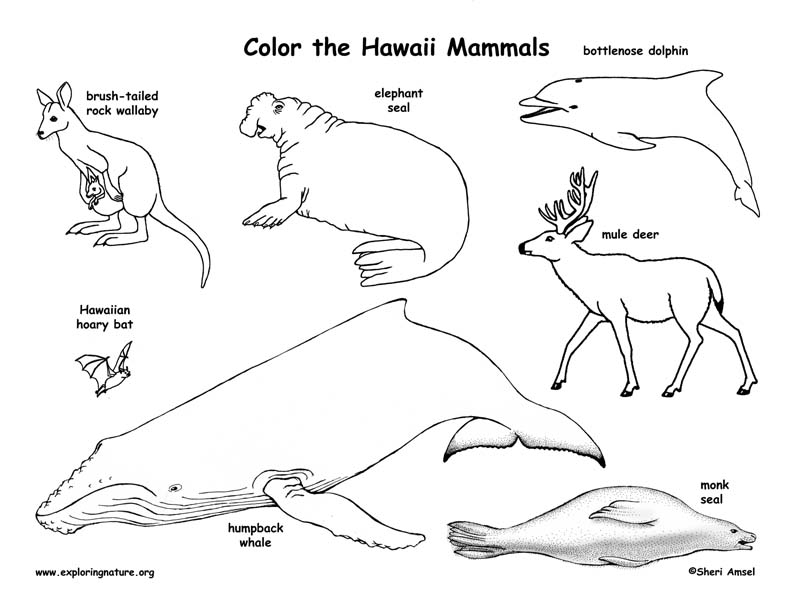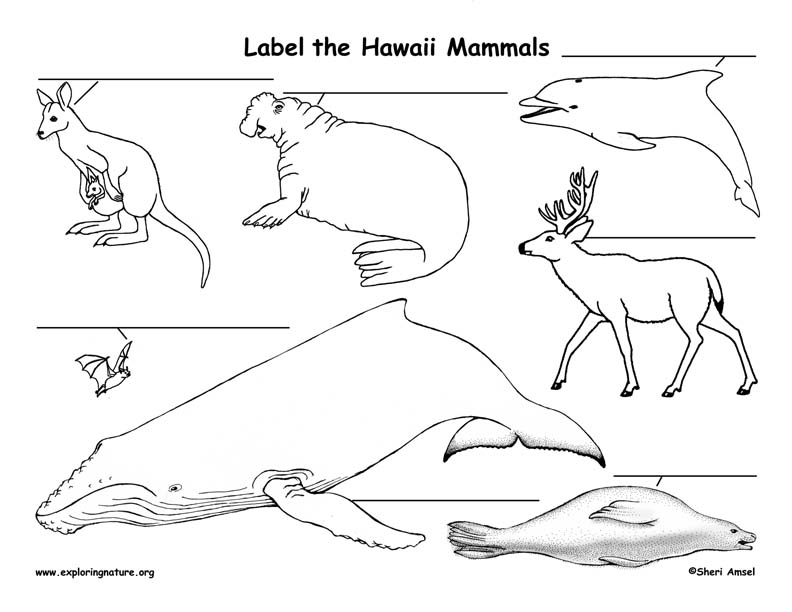

The state of Hawaii is actually a string of islands and coral reefs that stretches out in a 2,050 mile (3,300 km) arc in the middle of the Pacific Ocean. The Hawaiian Islands (also called an archipelago) are part of the United States, but are located 2,394 miles (3,852 km) from the California coast. There are 8 main islands in the chain - Hawaii, Oahu, Maui, Kauai, Lanai, Molokai, Niihau, and Kahoolawe. Hawaii (or the big island) is the largest and makes up about 2/3 of the state. Kahoolawe is the smallest island and is uninhabited. There are also more than 120 other small islands along the reef - all uninhabited. The Hawaiian Islands were created by volcanic action, many of which are still active, out in the middle of the North Pacific Ocean. They are not near any other land or ocean current, so have many species found only on the Hawaiian Island reefs. As much as 25% of the fish and perhaps as much as 90% of the land animals on the Hawaiian Islands are found only there (endemic). Hawaii's coral reef is mostly fringe reef - running along the shoreline in shallow water, but there is also barrier reef around Oahu and Kauai and atoll reef as apart of the northwestern Islands. Coral reefs are important for their biodiversity (the great number of different animal and plant species) and for their role in protecting the shoreline from the pounding effect of waves and storms. The Hawaiian Islands' coral reef makes up about 80% of all the coral reef in U.S. waters.
The temperatures on the Hawaiian Islands are mild all year, rarely dropping below 60° – except at the higher elevations of the Islands' many mountains. The trade winds from the east blow constantly. Some of the Hawaiian Islands' mountains reach over 13,000 feet (Mauna Kea and Mauna Loa) and often have snowy summits in winter, while at sea level the islands can be pounded by winter storms dropping inches of rain in minutes. The mountains also act as rain shadows on the islands, creating very different rainfall patterns on one side of the mountains from the other. For instance, on the northeastern side of Mauna Kea and Mauna Loa on the Big Island (Hawaii), the windward coast gets about 130 inches of rainfall each year, but on the west side of the Island, the leeward coast gets less than 30 inches of rainfall a year. Mt. Waialele, in the center of the Island of Kauai, is thought to be one of the rainiest place on the planet, receiving more than 450 inches per year. Yet Waikiki Beach gets little rain at all. These varying micro-climates are found all over the Islands and have an effect on the animals and habitats found in each.
Hawaii's lush tropical rainforests are often on the windward sides of the islands (the side with the most rainfall) at low elevations (warmest location), up to about 1,000 feet. Above 1,000 feet the forests may still be wet and rich with biodiversity, but they become more temperate and less tropical higher up.
The Hawaiian Islands today are struggling with habitat loss and invasive species invading what habitat remains intact. The Hawaiian Islands have almost no native mammals except the Monk seal and Hawaiian hoary bat, yet introduced mammals have thrived and seriously upset the species balance on the islands. Feral pigs are quickly destroying the islands' tree fern understory among other plants and ground nesting birds. The introduced mongoose has been especially devastating to ground-nesting birds and is now on all the islands except for Kauai. Scientists believe that as many as 25% of all Hawaii's native species are endangered.
For more information about Hawaii's habitats (off-site) resource: LINK
Ocean Mammals:
For more information about Hawaii's mammals (including Latin names) click on individual animal links or for another (off-site) resource: LINK
Amphibians
Reptiles
For more information about Hawaii's amphibians and reptiles (including Latin names) click on individual animal links or for another (off-site) resource: LINK
For more information about Hawaii's birds (including Latin names) click on individual animal links or for another (off-site) resource: LINK
When you research information you must cite the reference. Citing for websites is different from citing from books, magazines and periodicals. The style of citing shown here is from the MLA Style Citations (Modern Language Association).
When citing a WEBSITE the general format is as follows.
Author Last Name, First Name(s). "Title: Subtitle of Part of Web Page, if appropriate." Title: Subtitle: Section of Page if appropriate. Sponsoring/Publishing Agency, If Given. Additional significant descriptive information. Date of Electronic Publication or other Date, such as Last Updated. Day Month Year of access < URL >.
Amsel, Sheri. "Hawaii Habitats, Mammals, Birds, Amphibians, Reptiles" Exploring Nature Educational Resource ©2005-2024. December 13, 2024
< http://www.exploringnature.org/db/view/Hawaii-Habitats-Mammals-Birds-Amphibians-Reptiles >






